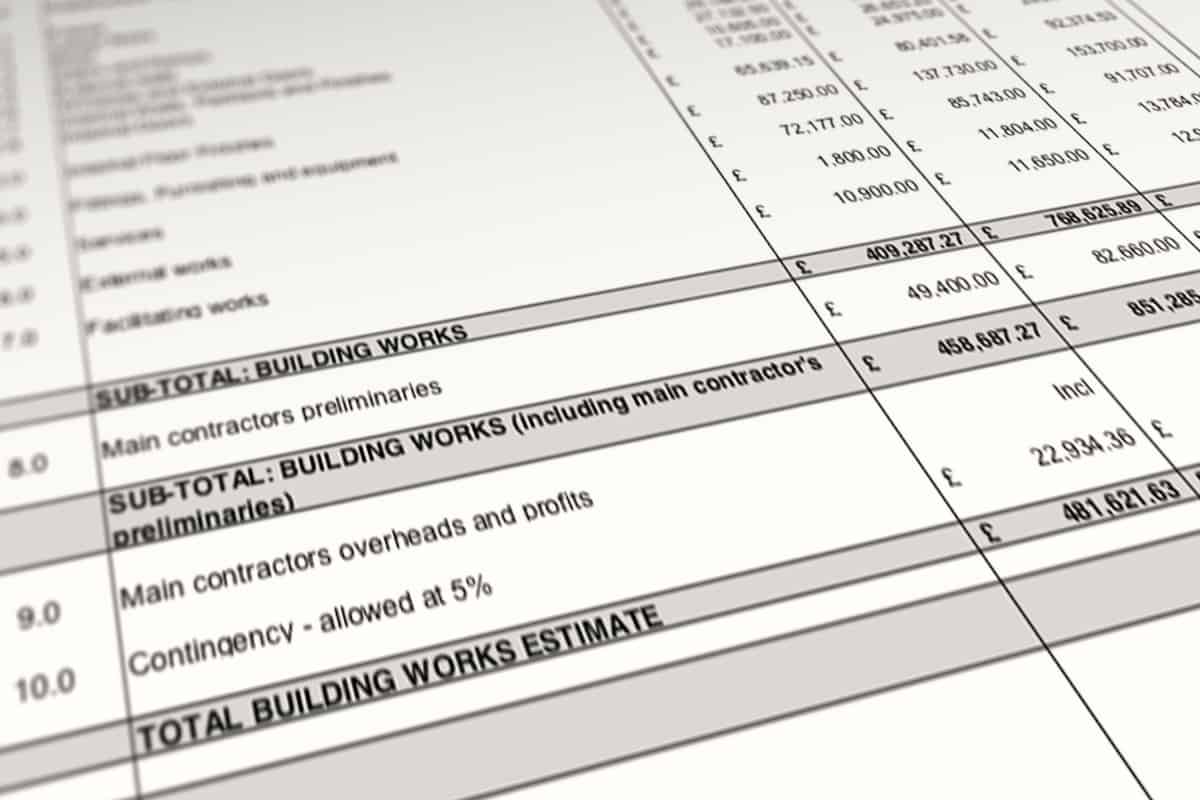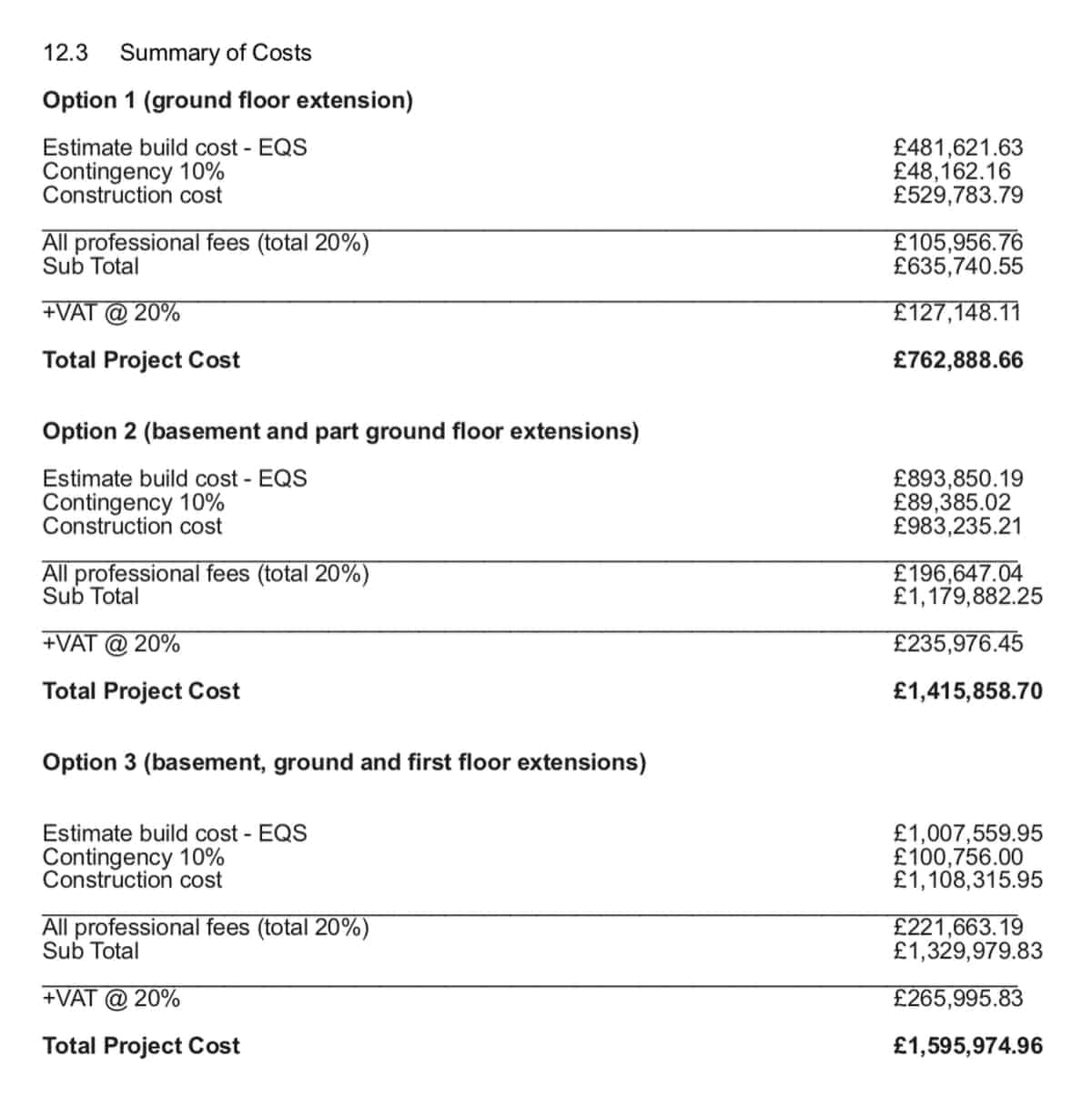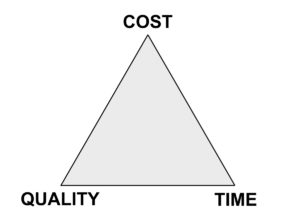BLOG
INTERESTING STUFF
THAT CAUGHT OUR EYE
John’s Advice: How Much Does it Cost to Build, Extend or Renovate a House?

Everyone who wants to build a new home or improve their current one is first and foremost concerned with cost.
For many of our clients, developing their property is the largest personal investment they have ever or will ever make, so it’s crucial to be able to gain detailed cost estimates as early as possible.
But there’s no way of knowing what a project will cost without first gathering detailed information on the site in question and presenting the appropriate experts with a rough outline of your plans.
Arriving at the final cost of a project is a long collaborative process between the client, the architect, quantity surveyors and contractors. In this article, I will describe the role that each has in determining the cost of a project and how this estimate evolves over time.
Step one: the site and your plans for it
In the earliest stages, the only information you can use to estimate the cost is the site itself and the type of development you wish to pursue.
Our most preliminary cost estimates are often carried out before the client has purchased the property or the site they plan to work on, meaning we do not have access to condition or ground surveys which reveal much of the information we need to understand the complexities and risks of a development – all of which greatly affect cost.
Using historic costs from similar houses we have worked on over 25 years, we are able to provide a rough estimate using a net area cost/sqm. We take into account specific variables to do with the site or the client’s brief and adjust accordingly.
The cost, quality, time triangle
Nearly every building project is a balance between cost, quality and time – when one point of the triangle is prioritised, it typically results in compromise elsewhere.
You must decide which is most important to you during your earliest discussions, because you’re not going to get a project which is low cost, high quality and delivered quickly. During our Feasibility Study service, the client’s priorities of cost, quality and time is the first factor we establish.
Every home owner has their own priorities on the cost, quality, time triangle, so the average cost of a residential building project is skewed by extremes on either end. On one side, bespoke luxury homes built by master craftspeople, on the other, low quality home improvements by unqualified builders.
As we work exclusively in the high end residential market, our clients typically put quality first both to reflect their tastes and so that the end value of their home maximises the return on investment.
This requires the use of durable, high quality materials, state of the art home technology, specialist contractors and suppliers – all of them taking considerable investment in time and money.
Site and structural issues which increase the cost of a new home or extension
What you can achieve with your budget depends upon the site or the structure of the existing building and the construction complexity of what you are looking to achieve.
- Planning restrictions may determine what materials and design can be used, for example, timber sash windows are required in many conservation areas.
- Poor ground quality may necessitate expensive foundational works such as underpinning to support any new structures.
- A high water table increases risk of groundwater penetration which needs to be mitigated with damp proofing, especially in basements.
- There may be protected trees on the site, which require an assessment from an arboricultural consultant and an application for removal.
- Restricted access for tradespeople and vehicles may result in additional equipment requirements and labour costs.
- If your plans require the removal of load-bearing walls, new structural works will have to be carried out to support the original structure.
- Out of date building services (plumbing, wiring, heating etc.) can’t be combined with current specs, so extending a property may require house-wide works.
- Period homes can hide many problems beneath a fresh coat of paint: rotten timbers, damp and mould, cracks and subsidence.
Many of these costs can be accounted for before a project starts with the help of the relevant consultants, but some may only become apparent once we are able to perform more invasive surveys after you have purchased the property which allow us to properly assess its condition.
There are some decrepit old houses that are so expensive to bring up to modern standards that it is actually cheaper to demolish them and start from scratch.
Step two: provisional plans and summary of costs
When you have a more complete understanding of what can and can’t be achieved on your site, you can begin working with an architect to develop provisional plans to help you narrow down the range of potential project costs.
We typically provide clients with multiple design options at different specification levels so that they can compare what can be achieved at a range of budgets and determine which design presents the most value for them.
For example, a client might decide to add a first floor extension as well as a ground floor extension if they see that the cost increase would only be around 20%. On the other hand, they could realise that a basement which doubles the build costs wouldn’t provide enough utility to justify the spend.
 An example of a provisional summary of costs which presents three different specifications for an extension and renovation project in London.
An example of a provisional summary of costs which presents three different specifications for an extension and renovation project in London.
Quantity surveyors refine cost estimates to establish a market rate for the project
The summary of costs shown above was estimated with the help of a quantity surveyor, who keep up to date records of cost averages for labour, building equipment, materials and appliances.
They use this information to estimate the costs of each of the designs we have drawn up with the client to fill a detailed, itemised spreadsheet which presents a total in what is called a “cost model”.
A cost model is a “live” document which evolves as the project progresses, becoming more and more precise as we move closer to tender. Such figures are only ever accurate to the time they are written, as costs fluctuate due to market factors and inflation.
 Above is the very early cost model by a quantity surveyor which we used to produce the provisional summaries of costs above. The full document is almost 20 pages long.
Above is the very early cost model by a quantity surveyor which we used to produce the provisional summaries of costs above. The full document is almost 20 pages long.
But quantity surveyors do more than just estimate what our designs will cost. We also collaborate with them to reduce or reallocate the budget based on the client’s priorities.
When you see the costs of each element of your project laid out in detail, you might, for example, see that adding an en-suite to every bedroom could be equivalent to the cost of having a fully-equipped cinema room. Or by having render walls rather than brick you could afford to extend your ground floor even further.
This process of refining the design and the costs continues until you are fully satisfied with the value of the development in relation to your investment.
Step three: the tender process, Bill of Quantities or Schedule of Works and final costs
Once you and your architect have confirmed the final designs for your development and you have received planning permission, your quantity surveyors will produce a Bill of Quantities or Schedule of Works.
They will price this confidentially for the client to give them the most accurate estimate of what contractors on the open market would charge for their project.
A Bill of Quantities is a near-final cost model sent to contractors for the tender process, along with the architect’s drawings and specifications.
Contractors then send back their priced Bill of Quantities as part of their tender, which is their proposal for supplying the labour, goods and services to complete the project. There may also be a number of sub-contractors involved during the tender process who might all present their own adjustments.
Once all parties have agreed on the costs, a final Bill of Quantities is produced and included in the Building Contract, which outlines a fixed price within which contractors must complete the agreed works.
Of course, things can go wrong on site as defects are discovered in the structure or the client changes their mind on certain details, which is why we always include a contingency fund on top of the total costs of labour, materials and services.
Do you want a clear idea of how much your building project will cost?
To save yourself investing time, effort and money in a project which you won’t be able to fund, we provide a detailed Feasibility Study which includes detailed summaries of costs such as those pictured above.
Our Feasibility Study is the best way to gain accurate estimates of your dream home’s cost and make sure that it is the best investment you will ever make. For more information, contact the studio now at [email protected]

